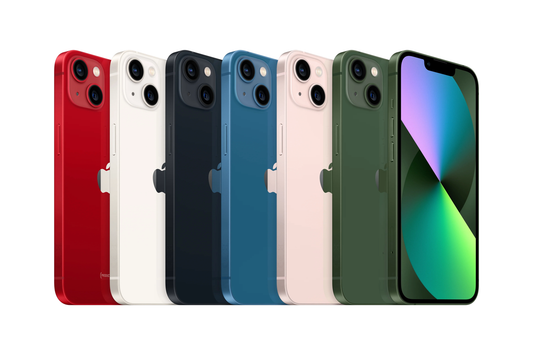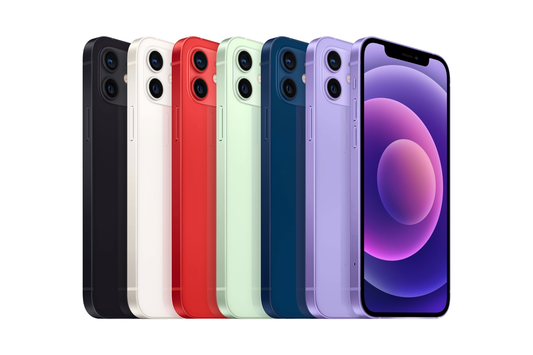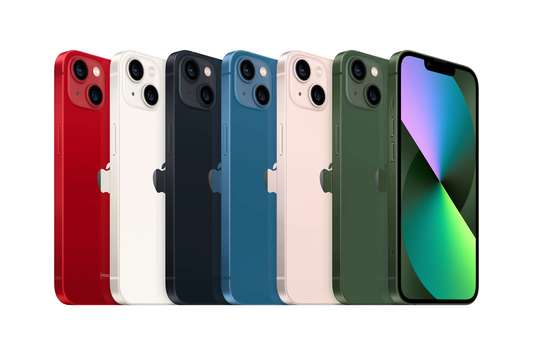What are iOS upgrades and why do they matter?
Every September, Apple rolls out a major update to the software that powers your iPhone. Each release comes with a new number — iOS 16, iOS 17, iOS 18, and most recently iOS 26 in September 2025.
These major releases contain new features designed to make your phone easier and more enjoyable to use. They also offer new functionality for app developers to make their apps more capable. On top of the cool new features, each new release brings key performance and security upgrades that keep your phone running smoothly and safely.
Between major releases, Apple also rolls out a series of minor releases (ie iOS 18.1, iOS 18.2 etc) which primarily fix bugs and patch any newly discovered security gaps.
It’s a good idea to update your phone as soon as the next version is available. Updating to the latest iOS version, even these minor releases, is an important step for phone security. Plus, if your iOS version falls too far behind, you may not be able to use certain apps.
If you haven’t already downloaded iOS 26, it should be available for you now – assuming your phone is compatible. On each new release (with some exceptions, like iOS 18), Apple drops support for a generation of iPhones, meaning that generation won’t be able to get iOS updates anymore. If your iPhone is older than six or seven years old, it may not be eligible (we’ll get to that below).
iOS Version And App Compatibility
As we mentioned above, new versions of iOS come with new features that app developers can take advantage of. For example, iOS 18 debuted Dynamic Island, and iOS 26 lets apps use on-device AI features.
As the app developers change their apps to support the latest versions of iOS, their apps might not be compatible with older iOS versions anymore. Supporting old iOS versions costs money, and since few users are using older versions, it ends up not being worth it for developers to support them.
Many large app developers have a policy of supporting the current iOS version and the previous iOS release. So if you have an iPhone that's one generation behind, all of your apps should work flawlessly … until the new update rolls around next September, at which point, some apps may stop working on your phone.
If you're wondering about a specific app, make sure to check out our App Compatibility Checker. It will tell you which operating system the app requires, and which phones will run the app (and for how long)!
iOS Security Updates
The security features and patches provided by Apple’s iOS updates are a crucial part of protecting your phone. Without them, your data and accounts could be vulnerable to attackers.
Apple builds security patches into each new iOS release, as well as patching older versions of iOS. Apple is a bit cagey about this, but our read is that — like the app developers — they are committed to supporting the current and one previous major iOS release.
Occasionally, Apple releases security patches for iOS versions prior to one generation back. For example, a patch was pushed for iOS 15 this September. But these aren’t regular security updates like newer versions get, so if your iOS version is older than two generations, you may have some vulnerability in terms of security.
What iOS is my phone on and why does it matter?
When it comes to what your phone can do and how long it'll last, the iOS version it supports is more important than the age or the model. Here’s a quick overview:
- iOS 17 still supported models back to the iPhone X and second-generation SE, dropping the iPhone 8, 8 Plus and X.
- iOS 18 didn’t drop any models, which meant even users on devices like the iPhone XR and XS could keep up with the latest system features.
- iOS 26, however, marked a significant cut-off, ending support for the iPhone XS, XS Max and XR.
Knowing your phone's iOS version is important because it directly impacts whether you get the latest innovations, crucial security updates and the ability to run the newest apps. Being on an older iOS version isn’t the worst thing, but past a certain point, it’s a good idea to upgrade. Below, we’ll look at each iOS version, what phones are compatible with it and when you might need to get a new phone.
iOS 26: Which iPhones are compatible with the new iOS update?
iPhones from the iPhone 11, iPhone SE (second generation) and up (roughly, those released in 2017 or later) will be able to upgrade to iOS 26, which was released in September 2025. The update will get you the latest interface, the new features we looked at above, and crucial security upgrades for your phone.
To update, you’ll need to make sure you have enough storage on your phone. If you don’t have enough free space, clear some up by deleting unused apps, pictures or files.
You can update your phone by going to Settings > General > Software Update. Make sure your phone is plugged in, and try to pick a time when you won’t need your phone for half an hour or more.
Scroll to the bottom of this article for a full list of which iPhone models and their latest compatible iOS.
iOS 18: The ‘Goldilocks Zone’ for iPhones one major update behind
If you’re using an iPhone XR, iPhone XS or iPhone XS Max, your phone is now in what we call the “Goldilocks Zone.” Your phone isn’t brand new, but it’s not too old: it’s just right.
iPhones in the Goldilocks zone are one major OS behind (currently that’s iOS 18). They won’t get the new features included in iOS 26, but they’re covered when it comes to the two most important considerations, app compatibility and security.
So if you own an iPhone XR, iPhone XS, and iPhone XS Max, your phone will work exactly as-is for another year: you won’t get any of the new features of iOS 26, but you’ll be able to use all your favourite apps for (at least) one more year, and you’ll continue to get security updates as well.
Curious which apps will likely stop working for your ‘Goldilocks’ phone in September 2026? We’ve compiled a list based on over 400 apps from our database. While not exhaustive, it covers most of the popular apps and gives you a clear overview at a glance. Scroll to the bottom of this article or skip to it by clicking here.
iOS 17 and Older: iPhones two or more updates behind
As an owner of an older model iPhone, you’re already (at least) two major operating systems behind: the iPhone 8, iPhone 8 Plus and iPhone X did not receive iOS 17.
That means developers will gradually stop supporting your iOS version. By now, you’ve probably seen the “Cannot download“ message, pictured below, when trying to install an app incompatible with your current iOS.

Many apps will support iOS 26, iOS 18 and even iOS 17, but increasingly, they’ll drop support for iOS 16.
Being on an older iOS version also introduces security vulnerabilities, since you’re not receiving regular updates and Apple doesn’t guarantee it’ll patch known security flaws.
To keep your phone as secure as possible, if you own an iPhone X or earlier model, we recommend upgrading your phone to an iPhone SE 3rd Gen, iPhone 12 or more recent model. Those models will continue to receive software support for another 2 years.
If you'd like to compare different iPhone (and even Android) models side by side, we built a nifty comparison tool with all the important info, including expected end of iOS support date.
Is there a specific app that you just can't live without? Use our compatibility tool to determine what devices can run that app (and for how long!)
How long does it take to install an iOS update?
An iOS update generally takes between 30 minutes and an hour. This can vary based on factors like your internet speed, the size of the update, and the amount of free storage on your device.
To install the update as quickly as possible, clear up enough free space before installing it, connect to a stable Wi-Fi network and plug in your phone to a charger.
iOS 26: Most interesting new features
Here are some of the highlights of the newly released iOS 26:
- New Design: Liquid Glass is Apple’s new design language in iOS 26, and it’s all about making your iPhone feel more fluid and consistent across apps and devices. The new interface is built around transparency, so buttons and toolbars get out of the way and keep your content in focus. You can choose between light, dark, colour-tinted and clear looks for your apps.

- Screen Calls and Messages: Call Screening automatically answers unknown callers without interrupting you. Once the caller shares their name and the reason for their call, your phone rings and you can decide if you want to pick up. You can also screen messages from unknown senders.
- Hold Assist: Hold Assist keeps your spot in line while you wait for a live agent and notifies you when they’re ready.
- Voice Mail Summaries: If you’re still getting voice mails in 2025, Apple Intelligence will listen to them for you and give you the gist in a text summary.
- Go global: By far one of the coolest new features of iOS 26 is live translation, letting you have realtime conversations in English, French, German, Spanish and Brazilian Portuguese. Italian, Japanese, Korean and Chinese are due to be added later this year. Live translation works for messages, too.
By the way, the leap from iOS 18 to iOS 26 wasn’t complete marketing nonsense: Apple synced the release number with the year to get naming consistency across their iPhone, iPad and Macbook software.
Full list of models and their latest compatible iOS
iPhone: iOS3 (3.1.3)
iPhone 3G: iOS4 (4.2.1)
iPhone 3GS: iOS6 (6.16)
iPhone 4: iOS7 (7.1.2)
iPhone 4S: iOS9 (9.3.5)
iPhone 5: iOS10 (10.3.4)
iPhone 5C iOS10 (iOS10.3.4)
iPhone 5S iOS12 (12.5.5)
iPhone 6: iOS12 (12.5.5)
iPhone 6 Plus: iOS12 (12.5.5)
iPhone 6S: iOS15 (15.6)
iPhone 6S Plus: iOS15 (15.6)
iPhone SE 2016: iOS15 (15.6)
iPhone 7: iOS15 (15.6)
iPhone 7 Plus: iOS15 (15.6)
iPhone 8: iOS16
iPhone 8 Plus: iOS 16
iPhone X: iOS16
iPhone XR: iOS18 (Goldilocks zone)
iPhone XS: iOS18 (Goldilocks zone)
iPhone XS Max: iOS18 (Goldilocks zone)
iPhone SE 2020: iOS 26 (latest available version)
iPhone 11 Pro: iOS26 (latest available version)
iPhone 11 Pro Max: iOS26 (latest available version)
iPhone 12 Mini: iOS26 (latest available version)
iPhone SE 2022: iOS26 (latest available version)
iPhone 12: iOS26 (latest available version)
iPhone 12 Pro: iOS26 (latest available version)
iPhone 12 Pro Max: iOS26 (latest available version)
iPhone 13 Mini: iOS26 (latest available version)
iPhone 13: iOS26 (latest available version)
iPhone 13 Pro: iOS26 (latest available version)
iPhone 13 Pro Max: iOS26 (latest available version)
iPhone 14: iOS26 (latest available version)
iPhone 14 Plus: iOS26 (latest available version)
iPhone 14 Pro: iOS26 (latest available version)
iPhone 14 Pro Max: iOS26 (latest available version)
iPhone 15: iOS26 (latest available version)
iPhone 15 Plus: iOS26 (latest available version)
iPhone 15 Pro: iOS26 (latest available version)
iPhone 15 Pro Max: iOS26 (latest available version)
iPhone 16: iOS26 (latest available version)
iPhone 16 Plus: iOS26 (latest available version)
iPhone 16 Pro: iOS26 (latest available version)
iPhone 16 Pro Max: iOS26 (latest available version)
iPhone 17: iOS26 (latest available version)
iPhone Air: iOS26 (latest available version)
iPhone 17 Pro: iOS26 (latest available version)
iPhone 17 Pro Max: iOS26 (latest available version)



